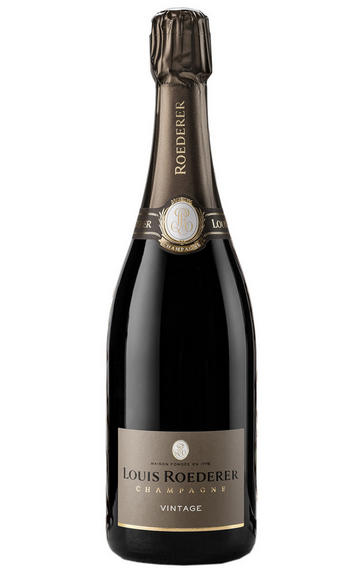
2012 Champagne Louis Roederer, Brut
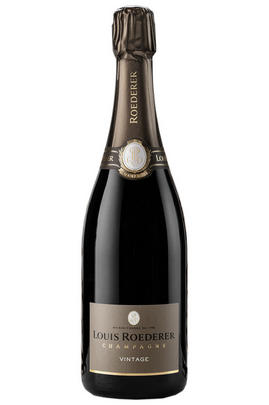
Critics reviews
Roederer’s white golden 2012 Brut Vintage is a classic Millésime. Based on 70% cool-climate Pinot Noir from Verzy and Verzenay (Montagne de Reims) and 30% Chardonnay from a very warm, south/southwest-facing vineyard in Chouilly (Côte des Blancs), the 2012 represents the mineral terroirs of its origins beautifully—pure, refined and fresh. Fermented 8% in oak and with just 16% of the volume having done malolactic fermentation to make the Roederer Brut Vintage a classic gastronomic wine, the 2012 shows a deep, rich and ripe but also fine, precise and elegant chalky nose with hazelnut, toasted almond and blossom flavors. The palate is profound, round, highly elegant and fresh, and the long, remarkably salty finish is very complex and terribly fresh in its persistent mineral expression. This is an impressive, ripe and almost creamy textured but precise and finessed 2012 with power, body and structure. A true, highly stimulating classic. Just love it! Disgorged in January 2017 after four years of bottle aging (dosage: nine grams per liter). Tasted in Reims in May 2018.
Drink 2024 - 2040
Stephen Reinhardt, Wine Advocate (Jun 2018)
Just over two-thirds pinot noir (Verzenay) and the balance southeast-facing chardonnay from Chouilly. This has 30% of oak fermentation which has compressed the wine, lending it an air of extreme concentration. The nose is gently spicy, offering peaches and cherries as well as neat autolysis edge. The palate has a powerful, long and assertive feel, with peach and lemon pith, chalky minerals, and some grapefruit. A powerful vintage for Roederer.
James Suckling, jamessuckling.com (Jan 2018)
About this WINE
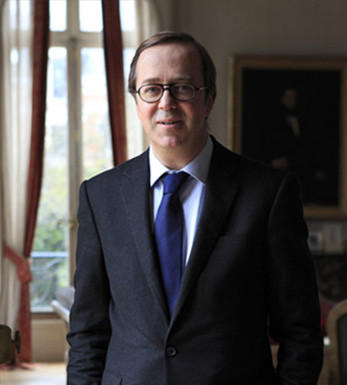
Louis Roederer
Founded in 1776, Louis Roederer is a family-owned, independent Champagne house with a well-deserved reputation for quality. It is managed by Frédéric Rouzaud, the seventh generation to be at the helm.
In 1876, Louis Roederer created the now-famous Cristal at the request of Alexander II. This once intensely sweet wine is now one of the most luscious, deeply flavoured champagnes available, with the '88, '89 and '90 among the greatest Cristals ever released.
Louis Roederer’s best-selling non-vintage blend for almost 40 years, Brut Premier, has recently been replaced by Collection 242. This new multi-vintage blend was created by Chef du Caves Jean-Baptiste Lécaillon in response to increasingly warm vintages. The cuvée aims to capture freshness and is based on a perpetual reserve which focuses on acidity and minerality.
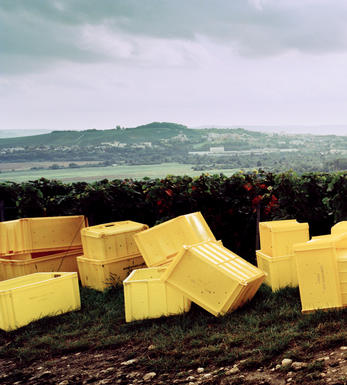
Brut Champagne
Brut denotes a dry style of Champagne (less than 15 grams per litre). Most Champagne is non-vintage, produced from a blend from different years. The non-vintage blend is always based predominately on wines made from the current harvest, enriched with aged wines (their proportion and age varies by brand) from earlier harvests, which impart an additional level of complexity to the end wine. Champagnes from a single vintage are labelled with the year reference and with the description Millésimé.
Non-vintage Champagnes can improve with short-term ageing (typically two to three years), while vintages can develop over much longer periods (five to 30 years). The most exquisite and often top-priced expression of a house’s style is referred to as Prestige Cuvée. Famous examples include Louis Roederer's Cristal, Moët & Chandon's Dom Pérignon, and Pol Roger's Cuvée Sir Winston Churchill.
Recommended Producers : Krug, Billecart Salmon, Pol Roger, Bollinger, Salon, Gosset, Pierre Péters, Ruinart
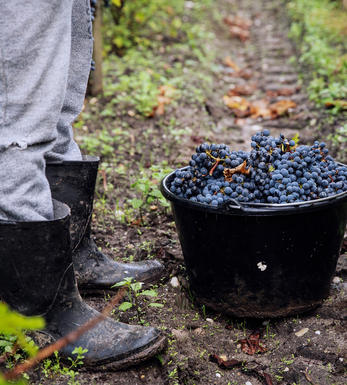
Champagne blend
Which grapes are included in the blend, and their proportion, is one of the key factors determining the style of most Champagnes. Three grapes are used - Pinot Noir, Chardonnay and Pinot Meunier.
26% of vineyards in Champagne are planted with Chardonnay and it performs best on the Côtes des Blancs and on the chalk slopes south of Epernay. It is relatively simple to grow, although it buds early and thus is susceptible to spring frosts. It produces lighter, fresher wines than those from Burgundy and gives finesse, fruit and elegance to the final blend. It is the sole grape in Blancs de Blancs, which are some of the richest long-lived Champagnes produced.
Pinot Noir accounts for nearly 40% of the plantings in Champagne and lies at the heart of most blends - it gives Champagne its body, structure, strength and grip. It is planted across Champagne and particularly so in the southern Aube district.
The final component is Pinot Meunier and this constitutes nearly 35% of the plantings. Its durability and resistance to spring frosts make the Marne Valley, a notorious frost pocket, its natural home. It ripens well in poor years and produces a soft, fruity style of wine that is ideal for blending with the more assertive flavours of Pinot Noir. Producers allege that Pinot Meunier lacks ageing potential, but this does not deter Krug from including around 15% of it in their final blends.


Buying options
Add to wishlist
Description
The 2012 vintage was exceptional in Champagne; yielding wines with maturity, freshness and longevity. Roederer’s 2012 is one of the standout cuvées of the year: sourced from the House’s own vineyards, it’s predominantly Grand Cru fruit from the Montagne de Reims. A blend of 70% Pinot Noir and 30% Chardonnay, over a third of the blend is vinified in large oak foudres, aiding texture and complexity. Rich and powerful, notes of white peach and yellow fruit pricked with ginger and saffron are supported by a saline freshness with a pure and dangerously moreish finish. Drink now to 2035.
Davy Zyw, Wine Buyer, Berry Bros. & Rudd (Oct 2019)
wine at a glance
Delivery and quality guarantee